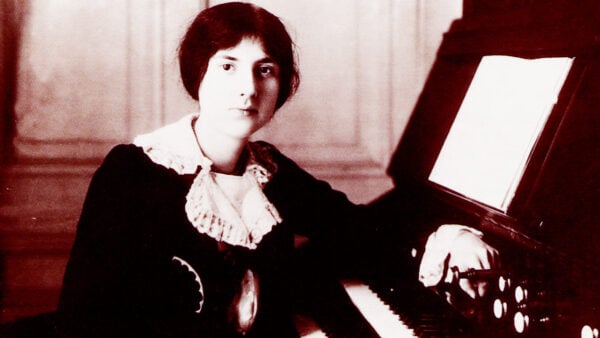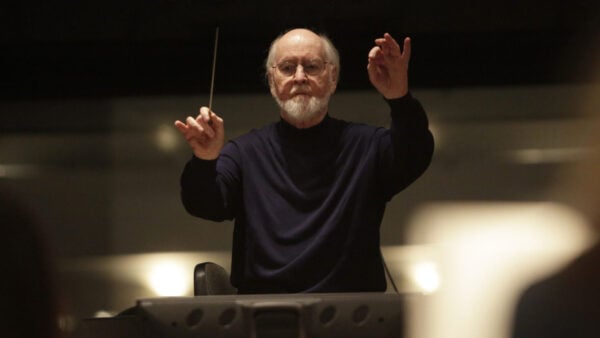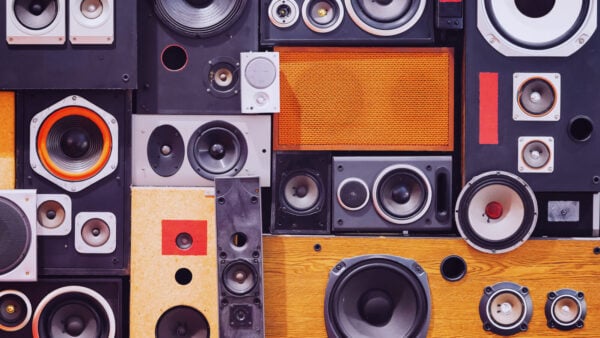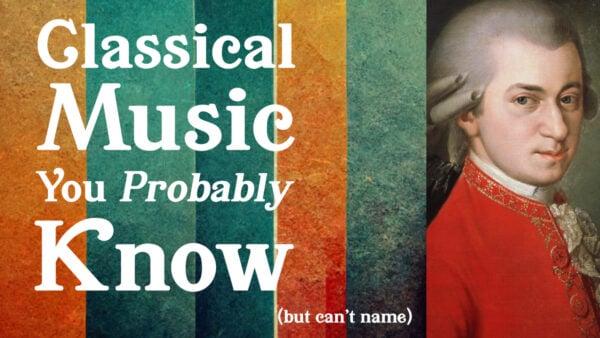Before there was sound, there was music. In film, at least. Music has always been ubitiquitous in film, dating back to the early days of cinema: public screenings in the late 19th-century. In fact, movies' use of a musical backdrop predates the advent of synchronized sound in "talkies" by over 30 years.
And as vital as it is for most films, it's hard to name a genre for which music is more vital than horror. Furnishing tone, pacing, characterization, atmosphere, and so much more, a well-done horror soundtrack can become synonymous with its movie... and with fear itself. There are hundreds of worthy, spine-tingling entries, but here are 13 horror movie soundtracks we think you should know. [Jump to playlist]
1. Bernhard Kaun: Frankenstein (1931)
The score balances bluster and dread. The loud and chaotic passages represent the Doctor's hubris and the villagers' anger and fear of the monster, and the quieter, more foreboding moments represent the monster, a misunderstood but still very dangerous presence. This approach became a precursor for the scores of other Golden Age Monster Movies and its sound has become inextricably linked to that era of horror filmmaking… and in one way or another, everything that came next.
2. Bernard Herrmann: Psycho (1960)
Screech! Screech! Screech! Audiences were taken aback by Alfred Hitchcock's Psycho. Though the movie — along with 1963's The Birds — may have shifted the popular imagination of the Master of Suspense, up until this point, Hitch was primarily known as the master of the urbane thriller, à la Vertigo and Rear Window. That all changed in one pivotal shower scene, a still-shocking explosion of violence that would subvert the expectation of even the most seasoned of viewers. And the tersely cut scene would not be the same without Bernard Herrmann's indelible shrieking strings.
3. John Williams: Jaws (1975)
Simply iconic. John Williams' music is one of the most recognizable themes in film, and it will forever be associated with all sharks. The theme itself is a simple composition but what sells it is the buildup. The film is a slow burn of paranoia. The characters and audience never know when the shark will leap out and eat another beachgoer. Creating fake outs by cutting the music short is a great way to build tension and to catch viewers by surprise. But that wave of relief usually proves short-lived, as only seconds later, the shark attacks someone else. You're never safe in the water.
4. Jerry Goldsmith: The Omen (1976)
Veteran composer Jerry Goldsmith (Chinatown, Alien, Mulan… how's that for range!?) took home an Oscar for The Omen. It's easy to see why. Goldsmith's classic score is as spiky and original as it gets. His theme song, "Ave Satani" is a bedlam, a breakneck bastardization of plainsong. It carries Latin and Latin-ish refrains that translate to such phrases as "Hail, Hail Antichrist!" and "Raise the body of Satan." But along the way, Goldsmith builds in contrast in the form of saccharine, wholesome-sounding cues. It’s the perfect musical reminder of what could have been, if not for the sinister events that upend the familial bliss of the Thorns.
5. John Carpenter: Halloween (1978)
In three days, John Carpenter created one of the most enduring horror movie scores of all time. And as NPR notes, it's also one of the cheapest. That was by necessity: the film was made for $300,000; there was simply no room in the budget to commission a score. So Carpenter, the film's director and co-writer, took to a synthesizer and "recorded five or six themes." The chilling and minimalist score helped spawn a long-running series and an army of soundalike soundtracks. Talk about bang for your buck! But despite all the sequels, loving tributes, and rip-offs (and hearing it every October), nothing has diminished the music's unrelenting and uncanny eeriness.
6. Goblin: Zombi (1978)
The music for Zombi is wild: combining rock, country, electronic, ragtime (?), with veins of more straightforward horror sounds popping up throughout. As fascinating as this score is, the story behind the movie might be even more interesting. Zombi is actually 1978's Dawn of the Dead, George Romero's sequel to his 1968 landmark Night of the Living Dead. Italian horror virtuoso Dario Argento, a keen fan of Night, helped on the sequel The two filmmakers edited different versions of the same footage. For the US cut, Romero stuck mostly with stock music. But the Argento outfitted his edit with a score he composed with Goblin, his past collaborators on the score of 1977's standout Suspiria. Though the soundtracks for the two cuts were different, both edits were considered extremely graphic and faced censorship in a variety of markets.
It’s also worth underlining the score for Zombi 2. Unlike its preceding film, Lucio Fulci’s Italian zombie movie, is made up of original footage. But not unlike Dawn of the Dead and Zombi, the movie was decried by some for its graphic violence and gore. The movie is now regarded as a cult classic. And like Zombi, this score, by Fabio Frizzi, is weird. It jumps all over the place, with some percussion-only tracks, with some cheesy love tunes and synthy grooves mixed in. Frizzi, who frequently collaborated with Fulci, has performed a medley of the score live as recently as 2013. So it’s worth checking out the music, but maybe skip the film… Says Greg, one of this piece's authors, "It's a horrible movie."
7. Wendy Carlos, Hector Berlioz, Béla Bartók, et al.: The Shining (1980)
Throughout his career, Stanley Kubrick made deft use of classical music in his films. The Shining is certainly no exception; the movie's use of classical compositions is as haunting as it is expert. The synths blare for Wendy Carlos and Rachel Elkind's main theme, an arrangement of the Dies Irae passage of Berlioz's Symphonie fantastique. This selection immediately makes the viewer uncomfortable and sets the tone for the rest of the film. As the characters snake up the narrow mountain roads to the hotel and navigate its tight hallways, the score conveys a pulsing tension. Then, crescendos in the form of compositions by Bartók and Penderecki heighten the film's most iconic scares: the girls in the hallway, the blood-filled elevator, and more.
8. Ennio Morricone & John Carpenter: The Thing (1982)
The story behind the score may be the most interesting thing about it. John Carpenter commissioned a score from his hero, Ennio Morricone. The great Italian composer wrote some music for the film, including the main theme, in the style of John Carpenter. Though not especially fraught, the creative relationship was not an easy one, with Carpenter recalling having to guide Morricone away from the "flourishy and ornate," entreating, "Ennio, use less notes." Carpenter ended up supplementing the orchestral score with his own music, finding Morricone's output lacking for some key scenes. When Morricone asked why he was even brought onto the project, Carpenter said he "got married to his music." The patchwork score was nominated for a Razzie (unfairly, if you ask us), and three unused tracks were recycled decades later for another Kurt Russell movie: Tarantino's The Hateful Eight.
9. Howard Shore: The Silence of the Lambs (1991)
The Silence of the Lambs remains the only horror film to have won an Oscar for Best Picture, and frankly, that is unlikely to change any time soon. It's a worthy winner. Top-to-bottom, the film is a model in collaborative cohesion, with deftly managed twists and turns, succinct and memorable visuals, and perfectly calibrated complementary performances. The music fits right into this well-engineered machine. Howard Shore's hushed, gothic score might jump out the way Anthony Hopkins' scenery-chewing, Oscar-winning turn as Hannibal Lecter does, but it does blanket us with foreboding as we enter a world beset by pure evil.
10. Philip Glass: Candyman (1992)
Set in Chicago, this genre film explores gentrification, alienation, and racism. At first blush, Philip Glass's participation in the film is kind of surprising. The Baltimore-born UChicago alum had scored movies before, but unless you count the of the suffocating detachment of the experimental Koyaanisqatsi, none of them were horror. But that the filmmakers chose Glass, a minimalist master excelling in repetition, fits perfectly for film whose monster is summoned by saying his name five times in a mirror. The composer's crystalline score unsettles us; it's always in motion, and its pristine themes come in and out of view, each time with a different instrumentation, tempo, or evocation. We never quite know where we stand… or who else is there with us.
11. Clint Mansell: Black Swan (2010)
Darren Aronofsky's ballet world-set tale carries a long list of inspirations, including film's The Red Shoes, Dostoyevsky's The Double, and Swan Lake. Natalie Portman's Nina is a dancer driven to madness in her quest to win the lead role in the touchstone Tchaikovsky-scored ballet. Frequent Aronofsky collaborator Clint Mansell tapped into the ballet's iconic score, imbuing the soaring signature melodies with a brooding unease.
12. Joseph Bishara: The Conjuring (2013)
"It scares us just thinking about it. When you hear it, you're going to think we're insane."
So opens The Conjuring. The first line of the film, accompanied by a pitch-black screen before the sudden reveal of a possessed doll, Annabelle, sets up the movie and its music perfectly. For the ‘70s-set first film in the goliath Conjuring Universe franchise, composer and music producer Joseph Bishara re-teamed with director James Wan (they’ve worked together 3 times since), for an ominous and atmospheric score. String sections linger in and out, as well as startling brass interludes, and off-putting choral backings. A lot of the score is "Mickey Moused," meaning synced to the film. So the score itself is front-and-center, but perhaps not quite as much as its composer. Beneath the cover of heavy makeup and prosthetics, Bishara appears onscreen as the demonic Bathsheba Sherman in one of the scariest reveals in recent memory.
13. Michael Abels: Get Out (2017)
When WFMT spoke to Michael Abels in 2019, the composer recounted an early creative conversation with the breakout horror film's director and writer, Jordan Peele. "'Bottom line, it's got to be scarier than—' You’d have to bleep me out..." Abels recalls Peele saying. "But Jordan also wanted the African American voice both metaphorically and literally in the film." Safe to say, Abels rose to the challenge. In the film's cornerstone piece, "Sikiliza Kwa Wahenga," Abels harnesses an unsettling, one-of-a-kind sound world. The track's persistent chanting — including of the piece's title, a Swahili phrase that translates to "Listen to the Ancestors" — conveys an unmistakable dread.
Full Playlists
Follow WFMT on Spotify and Apple Music!






